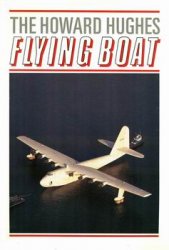Securing Hankow (October 25 1938) and, in the south, Canton (October 21). Now controlling most of northern and central China and all major ports, Japan in 1939 settled down to exploit its conquests, establishing a puppet-government under Wang Ching-wei at Nanking, March 1940, and relying on attrition to wear away Chinese resistance (an estimated
800.000 Chinese troops had been killed since 1937; Japanese losses about 50,000).
During World War II in the Pacific, from December 1941, Chinese forces received increasing aid from the Allies. The most effective resistance to the Japanese in China itself came from the communist guerrilla forces. In April 1944, Japan’s China Expeditionary Army (Gen Okamura) launched a major offensive (Ichi-go) to the east, aimed at seizing US Fourteenth Air Force’s bases in the Kweilin-Liuchow area and thence assaulting Chungking. The air bases were secured by December, but speedy reinforcement and improved Chinese-US cooperation early in 1945 allowed Chinese forces to counterattack in both Honan and Hupeh (March-June), forcing Okamura to withdraw northwards. Japanese forces in China surrendered to Chiang Kai-shek in August 1945; the Kwan-tung Army surrendered to Soviet forces in Manchuria on September 2. The Sino-Japanese War is estimated to have cost China some
1.300.000 combat deaths, with around 1,880,000 wounded; civilian casualties were probably much higher. RO’N.
Sino-Vietnamese War (1979). On February 17 1979, 85,000 Chinese soldiers out of a total invasion force of 320,000 crossed the Vietnamese border. China justified its attack by alleging Vietnamese border violations, but in fact it was in retaliation for Vietnam’s invasion of Cambodia and close alignment with the Soviet Union.
The invading troops,, supported by armour and massive barrages of artillery and rockets, poured through five routes leading toward provincial capitals. Attacking in “human waves” not seen since the Korean War, seizing the major border towns one by one, they captured Lang Son on March 2.
This placed the Chinese at the gateway to the Red River delta, but on the 5th, Peking (Beijing) announced its intention to withdraw. During withdrawal, ending March 16, the Chinese dynamited many buildings in one nf the few areas of Vietnam that US bombers had earlier left untouched.
Considering the scope and intensity of the attack, the Chinese advanced slowly. This was because the invasion routes led through narrow, densely wooded, steepsided valleys in which the Vietnamese could fight from prepared positions on tactically advantageous ground. And although at first comprised mainly of local militia and regional forces, the defending force, which started with about 100,000 troops, included some regional units that were better equipped and trained than the Chinese. The attack revealed deficiencies in the Chinese army that stimulated demand for military modernization. WST.
Sirte, First Battle of (December 16-18 1941). 15th Cruiser Squadron (Vian), escorting the Breconshire to Malta, was intercepted by the Italian battle fleet (lachino), covering a supply convoy for Rommel. The action was indecisive, but it led to the three cruisers of Force K from Malta running into a minefield off Tripoli with the loss of Neptune and damage to Aurora ondPenelope.
Sirte, Second Battle of (March 22 1942). Vian’s squadron of 4 light cruisers (15th) with destroyers, escorting a Malta convoy from Alexandria, fought off Italian battleship Littorio, two heavy cruisers and one light cruiser (lachino) in a four-hour series of actions. The British force suffered damage but no losses. Two Italian destroyers sank in the subsequent storm.
Sittang river, Battle of (1942) see
BURMA CAMPAIGN.
Sixth Army (US). Activated on January 25 1943, Sixth Army served in the Pacific Theatre. Commanded by Lt Gen Krueger, it fought with distinction in New Guinea, the islands of the Bismarck Sea and the Philippines and formed part of the Allied army of occupation of Japan.
Sixth Army Group (US). Commanded by Lt Gen Devers, this formation included Seventh US Army and First French Army and became operational in France on September 15 1944. It played an important part in the liberation of France and the subsequent drive into Germany.
Sixth Fleet (US). Postwar American Mediterranean fleet based at Naples and the core of US strength in that sea. Landings in Lebanon (1958). In the 1980s, it has been involved in bombardments in the Lebanon and incidents with Libya in the Gulf of Sirte.
Skorzeny, Col (Standarten-fuhrer, SS) Otto (1908-1975). Austrian. Invalided to Germany in December 1942 after service with the Waffen SS in France and Russia, Skorzeny took an intelligence post under Schellenberg and was ordered to train SS “commando” units. His rescue of Mussolini at the head of one such unit, September 1943, led to expansion of the programme: Skorzeny raised two SS Parachute Rifle battalions and a Special Services battalion and also directed the clandestine operations of the Luftwaffe’s Kampf-gruppe 200. Among the scar-faced giant’s exploits were the kidnapping of the son of Adm Horthy (to prevent the Hungarian dictator from pursuing peace negotiations with Russia), October 1944, and the penetration of Allied lines in the Ardennes by SS troops in American uniforms, December
1944. Acquitted of war crimes in 1947, he escaped from internment and settled in Spain. RO’N. See also the essay underground warfare p.334.
Skyhawk, McDonnell-Douglas
A-4 (US). Single-seat shipboard attack bomber. Prototype flew June 22 1954; first deliveries to US Navy October 1956, to US Marine Corps March 1960. Much operational use in Vietnam, Laos, Cambodia; with Israeli air force Middle East wars, and by Argentine air force Falklands. Production (several versions), 2,960. One 11,2001b (5,080kg) s. t. Pratt and Whitney J52-P-408A engine; max. speed 685mph (l,102kph); two 20mm cannon, up to 10,0001b (4,500kg) externa] ordnance.




 World History
World History









